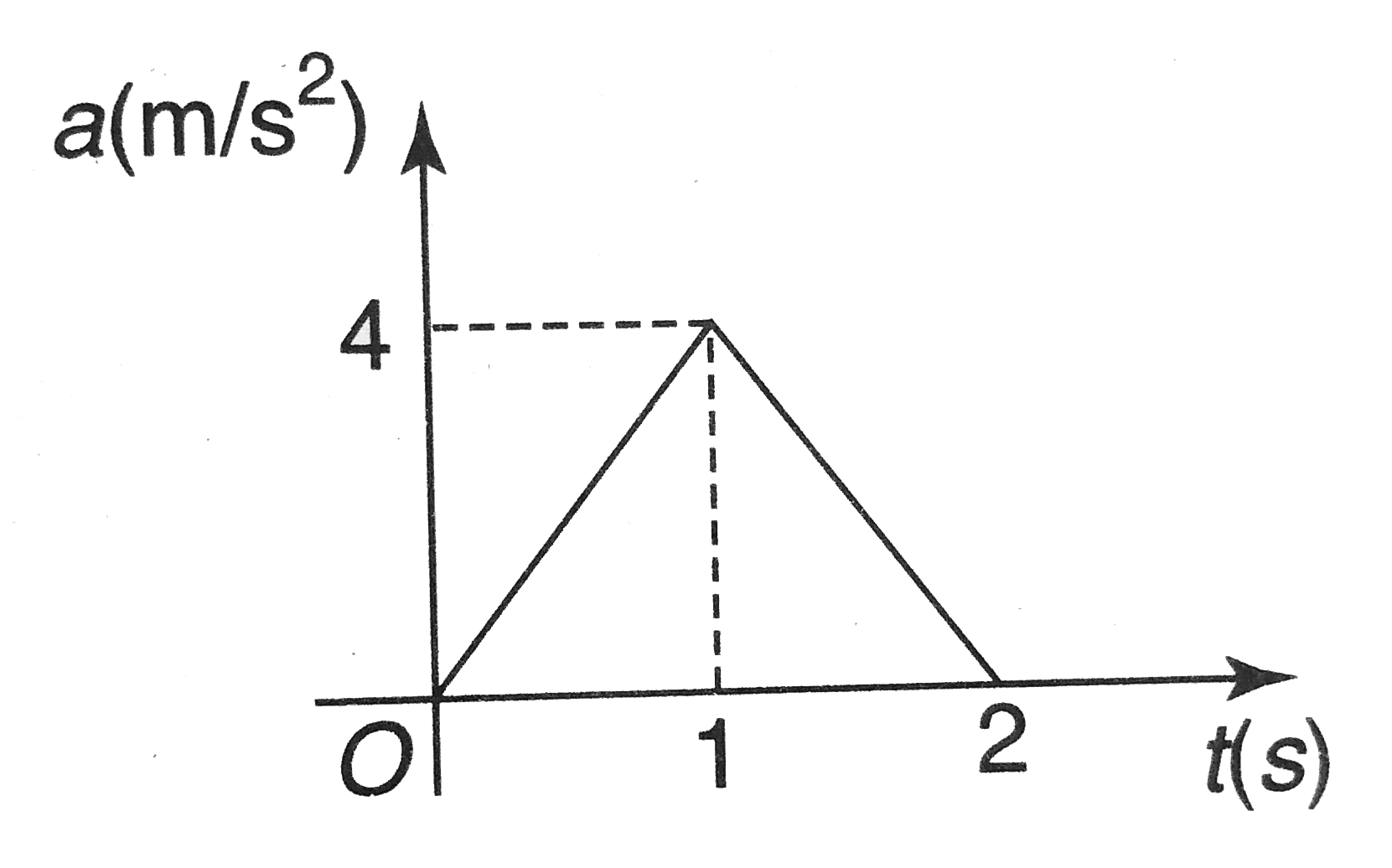The acceleration time graph of a particle moving along a straight line is as shown in figure. At what time (in second) the particle acquire its initial velocity?

a=a0t+a1,t=0,a=a1=10,a1=10,a=0att=4seconds.
0=+4a0+10,a0=2.5
a=2.5t+10,dvdt=−2.5t+10
∫dv=∫(−2.5t+10)dt,v=2.5t22+10t+C
t=0,C=v0,v=−2.5t22+10t+v0
v=v0−2.5t22+10t=0,2.5t25=10t
t=8 seconds.

Similar Questions
Displacement time graph of a particle moving in a straight line is a shown in figure.

View SolutionThe acceleration-time graph of a particle moving along a straight line is as shown in. At what time the particle acquires its initial velocity?
 .
.
View SolutionThe acceleration-time graph of a particle moving along a straight line is as shown in. At what time the particle acquires its initial velocity?
 .
.
View SolutionVelocity displacement graph of a particle moving in a straight line is as shown in figure.

View SolutionThe velocity time plot for a particle moving on straight line is shown in the figure.

View SolutionThe velocity time plot for a particle moving on straight line is shown in the figure.

View SolutionThe acceleration-time (a−t) graph of a particle moving along straight line is as shown in figure. The time at which velocity of particle becomes equal to its initial velocity is

View SolutionThe acceleration-time graph of a particle moving in a straight line is as shown in figure. The velocity of the particle at time t=0 is 2m/s. The velocity after 2 seconds will be

View SolutionThe acceleration-time graph of a particle moving in a straight line is as shown in figure. The velocity of the particle at time t=0 is 2m/s. The velocity after 2 seconds will be

View SolutionFigure shows the acceleration-time graph of a particle moving along a straight line. After what time the particle acquires its initial velocity?

View Solution